what are the steps for using disk management to prepare a drive for first use.
On Windows 10, when connecting a new internal or external difficult drive, it's important to spend the time to format it before storing files. You want to practise this to brand certain that the drive is empty, working as expected, and free of malware that might otherwise harm the current setup and files. It's also of import to format the storage to ensure that it's using the proper settings to avoid compatibility problems.
Whenever you format a hard drive, the data volition be deleted, since office of the process includes purging the file system table that tracks the locations of the files written on disk. The process will so define the area where files will be stored, and a compatible file system (such every bit NTFS, FAT32, or exFAT) volition be practical to organize the new content. The system will go along to discover the previous information, just it'll identify that data as available space to store new data.
Windows 10 includes many methods to format a difficult bulldoze, simply using Deejay Direction is peradventure one of the all-time options for near users.
In this Windows 10 guide, we'll walk you through the steps to properly format a traditional hard drive or Solid-State Drive (SSD), whether information technology already has a partition or was never initialized.
- How to format existing partition using Disk Management
- How to create and format sectionalisation using Disk Direction
How to format existing partition using Disk Management
When you're dealing with a drive that already has a segmentation, you can format the existing partition to delete its files and get-go with a clean storage.
To format a partition using Disk Management, use these steps:
- Open up Start.
- Search for Create and format hard disk partitions and click the summit result to open the Deejay Direction panel.
-
Correct-click the new hard drive and select the Format selection.
 Source: Windows Central
Source: Windows Central - In the "Value label" field, ostend a new proper noun for the storage.
- Use the "File system" drop-down menu, and select the NTFS choice (recommended for Windows 10).
- Apply the "Allocation unit size" drib-downward menu, and select the Default option.
-
Check the Perform a quick format option.
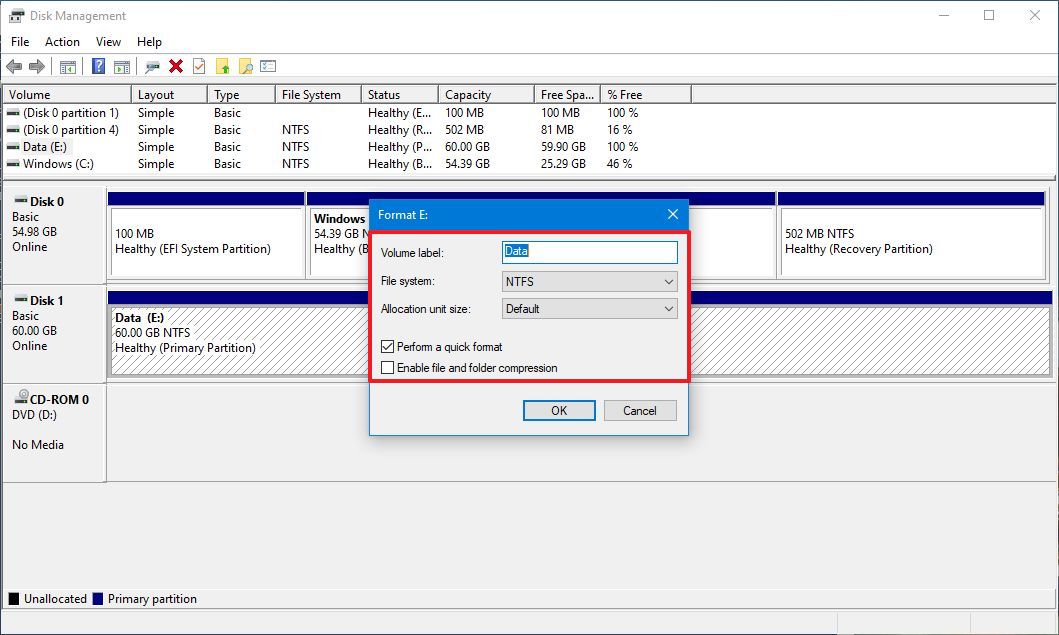 Source: Windows Central
Source: Windows Central Quick tip: The quick format option wipes the bulldoze fast, just it doesn't check for problems. On the other hand, when clearing the option, a total format will be performed, which non just wipes the bulldoze clean, merely it'll also check for bad sectors. It's an option that could take many hours depending on the size, but information technology'south a good practise to brand sure the bulldoze is in working conditions.
- Clear the Enable file and folder pinch option.
- Click the OK push button.
- Click the OK button over again.
Once you lot complete the steps, the tool will format the selected partition on the drive, and so yous can begin storing files.
How to create and format partition using Deejay Management
In the example that you lot accept a difficult drive that was never partitioned and formatted, it volition not appear in File Explorer, and yous'll have to initialize, create a new partition, and then format it before you can utilize it.
Usually, you tin can tell a hard drive doesn't have a sectionalization, because it will non appear in File Explorer, and on Disk Direction, information technology'll show up equally unallocated space.
To set up up a new hard bulldoze with raw space on Windows 10, use these steps:
- Open Starting time.
- Search for Create and format hard disk partitions and click the elevation result to open the Disk Management console.
-
Right-click the hard bulldoze marked as "Unknown" and "Non Initialized" and select the Initialize Disk option.
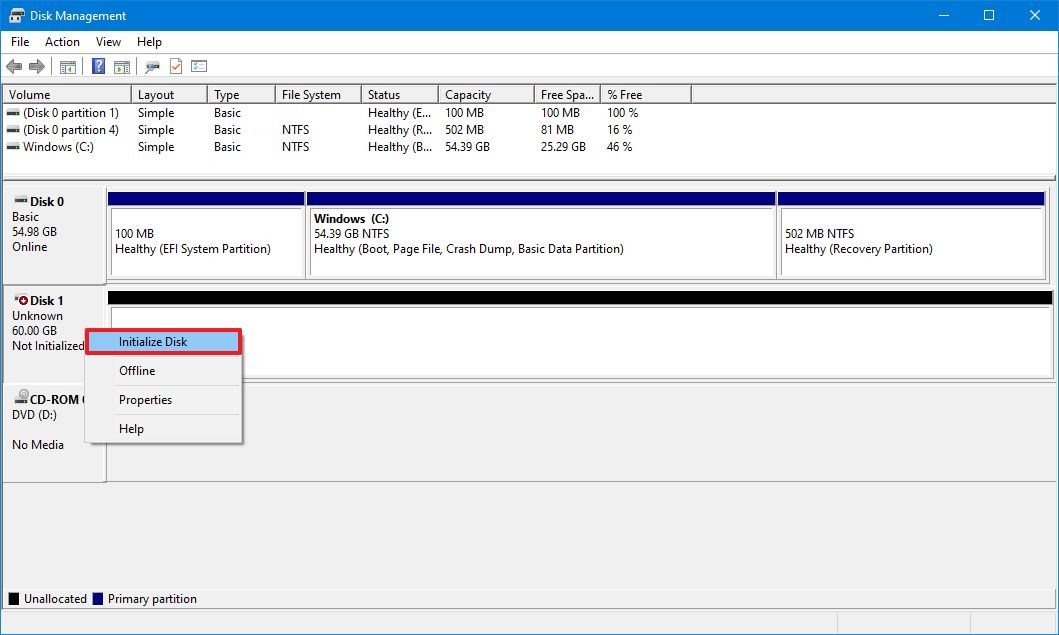 Source: Windows Key
Source: Windows Key - Under the "Select disks" section, check the disk to initialize.
-
Select the partition style:
- Master Boot Record (MBR) for hard drives smaller than 2TB in size.
- GUID Partitioning Table (GPT) for difficult drives larger than 2TB in size.
 Source: Windows Central
Source: Windows Central - Click the OK button.
-
Right-click the Unallocated space part of the storage, and select the New Simply Value option.
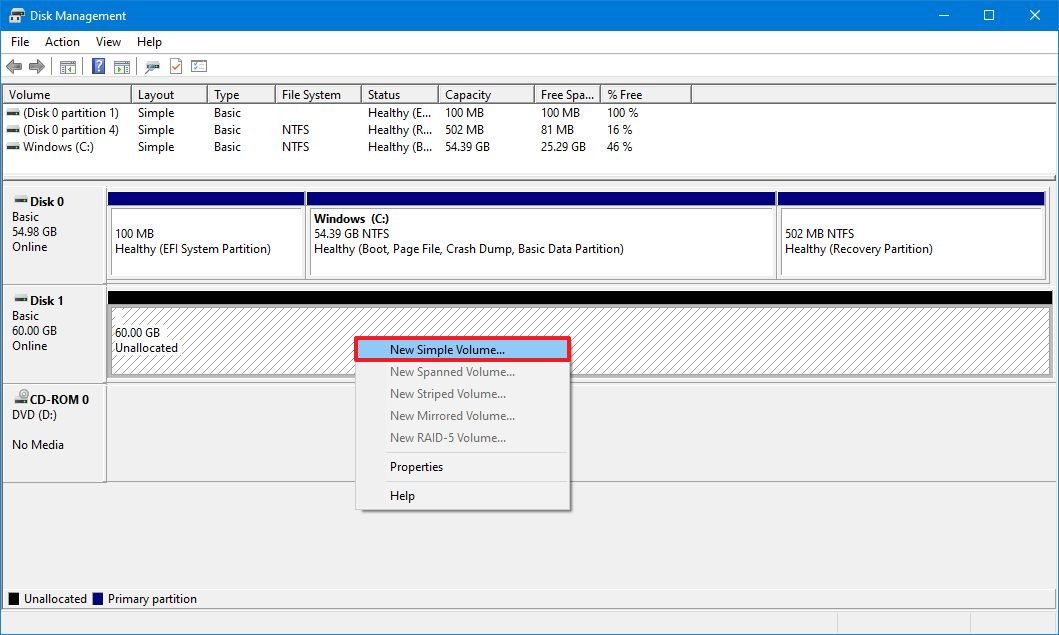 Source: Windows Central
Source: Windows Central - Click the Adjacent button.
-
Under the "Uncomplicated volume size in MB" section, get out the default size if you're planning to utilise the entire hard bulldoze to shop files. Otherwise, specify the amount of infinite in megabytes you want to classify for the sectionalization.
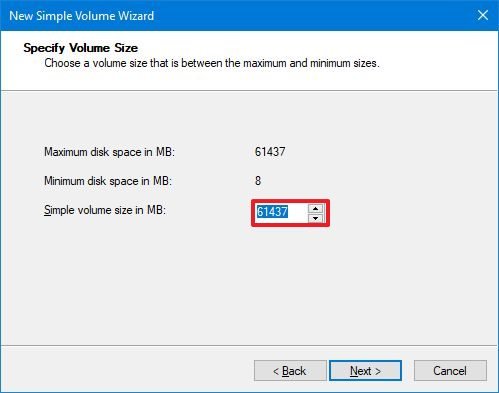 Source: Windows Key
Source: Windows Key - Click the Next push button.
-
Use the "Assign the following drive letter" driblet-down menu to select a new bulldoze letter.
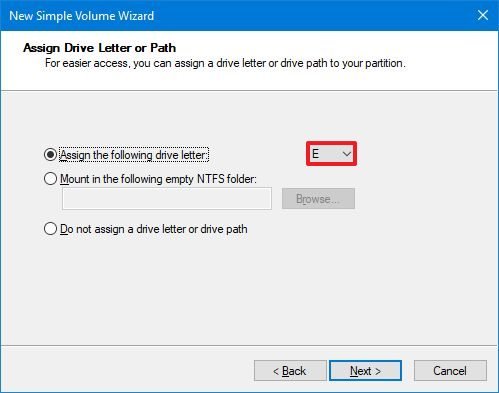 Source: Windows Fundamental
Source: Windows Fundamental - Click the Next button.
- Use the "File system" drop-down menu, and select the NTFS option (recommended for Windows 10).
- Use the "Allocation unit of measurement size" drop-downwardly menu, and select the Default option.
- In the "Value label" field, type a descriptive proper noun for the storage.
-
Check the Perform a quick format pick.
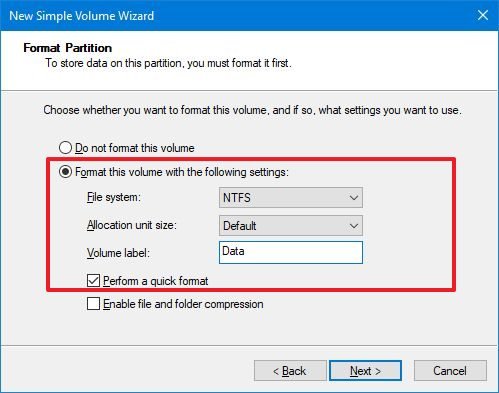 Source: Windows Central
Source: Windows Central Quick tip: To perform a total format that includes a disk check, articulate the quick format option. If you use the total format pick, call up that it can have many hours to complete depending on the size.
- Articulate the Enable file and binder compression pick.
- Click the Next push button.
- Click the Finish button.
After you complete the steps, the new hard drive will exist initialized, partitioned, and properly formatted.
If the drive is exhibiting bug using the Disk Management tool, as a result of information corruption or another event, you can use the DiskPart command-line tool to resolve the trouble.
We're focusing this guide on Windows 10, just these instructions should besides work on Windows 8.1 and Windows 7.
More Windows 10 resource
For more helpful articles, coverage, and answers to common questions well-nigh Windows 10, visit the following resource:
- Windows ten on Windows Central – All you need to know
- Windows 10 help, tips, and tricks
- Windows 10 forums on Windows Key
Source: https://www.windowscentral.com/how-format-new-hard-drive-windows-10








0 Response to "what are the steps for using disk management to prepare a drive for first use."
Post a Comment